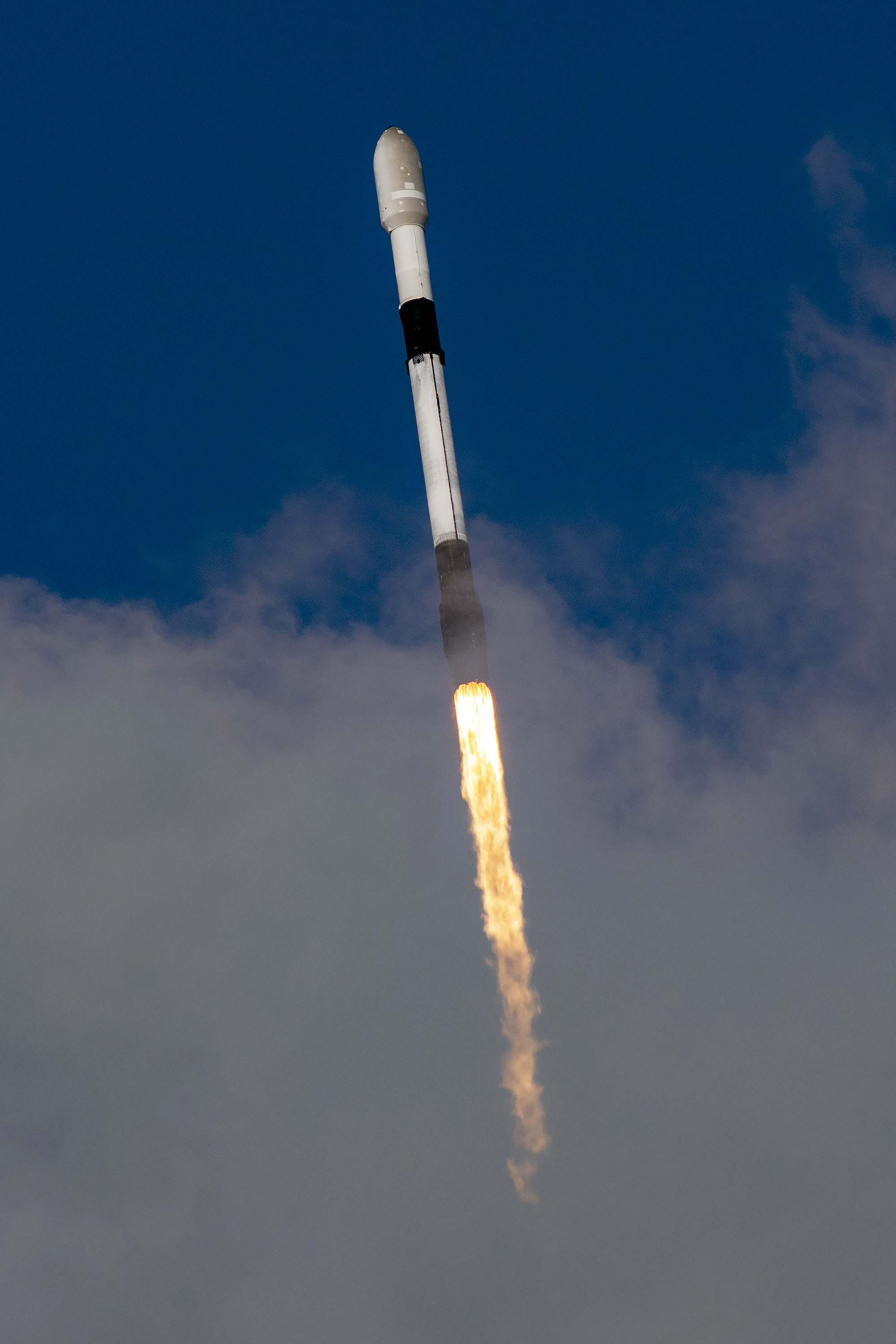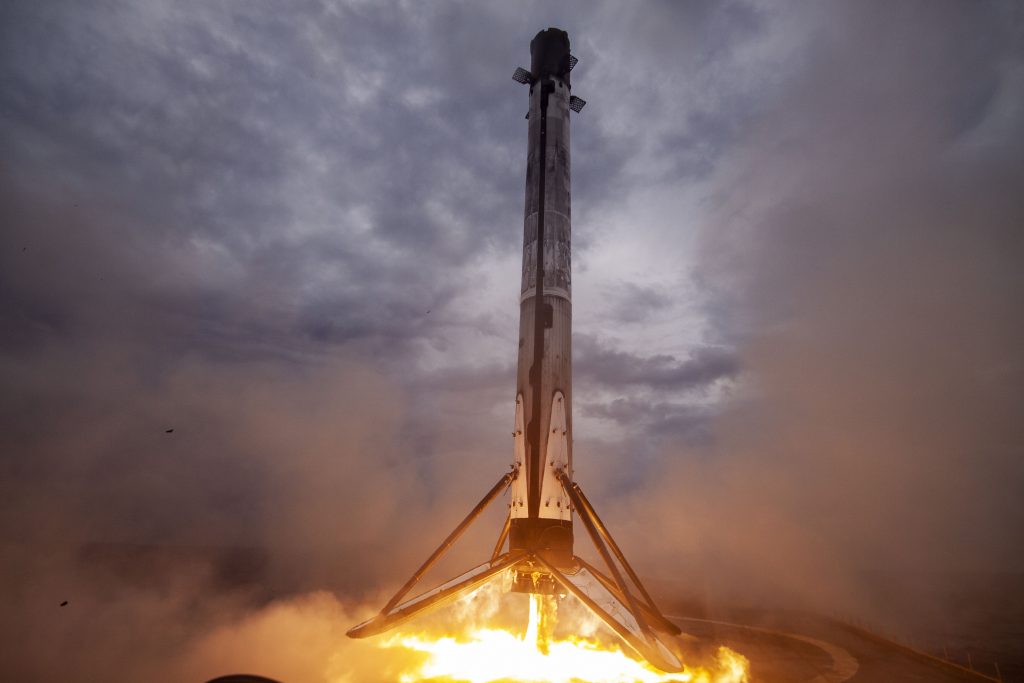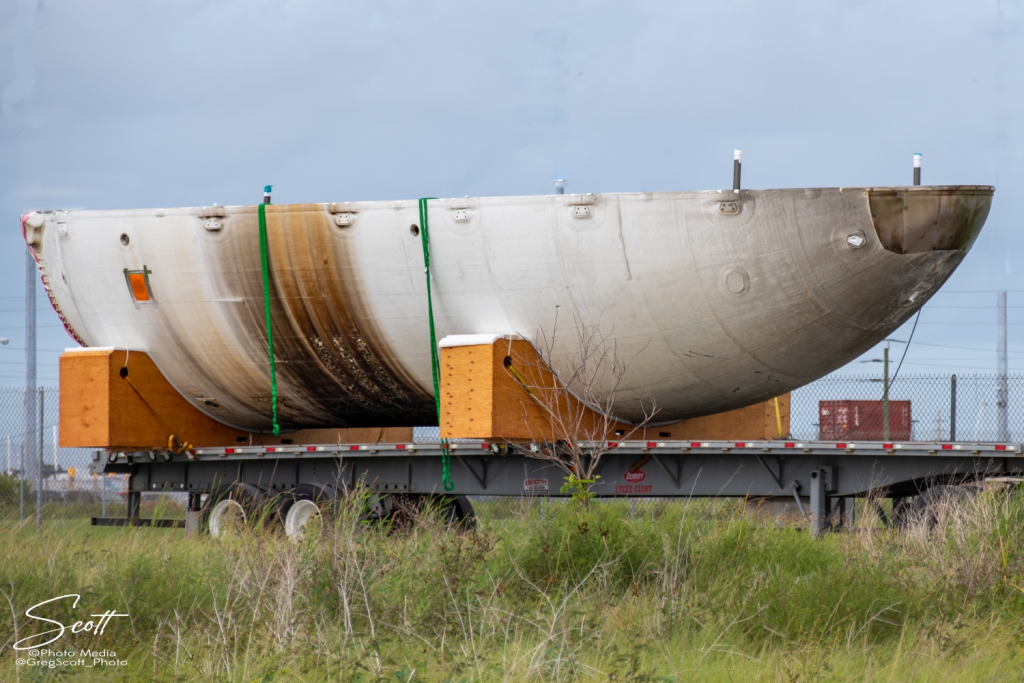Featured Image: SpaceX
Lift Off Time | July 29, 2023 – 03:04 UTC July 28, 2023 23:04 EDT |
|---|---|
Mission Name | EchoStar 24 |
Launch Provider | SpaceX |
Customer | EchoStar |
Rocket | Falcon Heavy; B1064-3 (MY), B1065-4 (PY), B1074-1 (center); 194.17, 194.17, and N/A day turnaround time, respectively |
Launch Location | LC-39A, Kennedy Space Center, Florida, USA |
Payload mass | 9,200 kg (20,300 lbs) |
Where are the satellites going? | Geostationary Transfer Orbit; Final Orbit: 95º East GEO |
Will they be attempting to recover the first stage? | Partially, the side boosters will be recovered, but the center core will be expended |
Where will the first stage land? | The side boosters will touch down on Landing Zone 1 and 2 (LZ-1 & LZ-2) |
Will they be attempting to recover the fairings? | Yes, Doug will attempt to recover the fairing halves ~1,533 km downrange |
Are these fairings new? | The payload fairing is flight proven with one half flying for its 5th time and the other its 6th |
How’s the weather looking? | The weather is currently 65% go for launch (as of July 27, 2023 04:15 UTC) |
This will be the: | – First flight of the medium coast kit – 7th Falcon Heavy launch – 183rd and 184th re-flight of a booster – 49th and 50th re-flight of a booster in 2023 – 212th and 213th booster landings – 138th and 139th consecutive landing (a record) – 53rd launch for SpaceX in 2023 – 67th SpaceX launch from LC-39A – 113th orbital launch attempt of 2023 |
Where to watch | Official livestream |
What Does All This Mean?
SpaceX is set to launch the most massive public payload to Geostationary Orbit atop its Falcon Heavy rocket from Launch Complex 39A, at the Cape Canaveral Space Force Station, in Florida. This mission will mark the third Falcon Heavy mission of 2023 and will place the EchoStar 24/Jupiter 3 communication satellite directly into Geostationary Orbit.
What Is EchoStar 24?
Space Systems/Loral (SSL) selected Hughes Network Systems to build its next-generation ultra-high density satellite EchoStar24, which is also known as Jupiter 3. This satellite is a large, multi-spot Ka-band satellite based on the SSL-1300 satellite bus–a satellite bus that has been used on many other satellites, such as the AsiaSat spacecraft, Galaxy Spacecraft, EchoStar spacecraft, and Intelsat spacecraft.
The satellite has two deployable solar arrays and batteries to power the antennas, which allow for up to 500 Gb/s of throughput. The satellite will go to geostationary orbit, where it will have a 15-year lifespan. EchoStar’s constellation currently consists of five satellites, launched between 2003 and 2017 on a number of vehicles, including the Zenit-3SL, Ariane 5, Atlas V, Proton-M, and Falcon 9.

What Is Falcon Heavy?
First Stage
The Falcon Heavy first stage contains 27 Merlin 1D+ sea-level engines across three cores. Each engine uses an open gas generator cycle and runs on RP-1 and liquid oxygen (LOx). Each engine produces 845 kN of thrust at sea level, with a specific impulse (ISP) of 285 seconds, and 934 kN in a vacuum with an ISP of 313 seconds. Due to the powerful nature of the engine, and the large amount of them, the Falcon Heavy first stage is able to lose several engines right off the pad, or up to two later in the flight, and be able to successfully place the payload into orbit.
The Merlin engines are ignited by triethylaluminum and triethylborane (TEA-TEB), which instantly burst into flames when mixed in the presence of oxygen. During static fire and launch the TEA-TEB is provided by the ground service equipment. However, as the Falcon first stage is able to propulsively land, three of the Merlin engines (E1, E5, and E9) contain TEA-TEB canisters to relight for the boost back, reentry, and landing burns.
Second Stage
The Falcon Heavy second stage is the same as the Falcon 9’s. It contains a singular MVacD engine that produces 992 kN of thrust and an ISP of 348 seconds. The second stage is capable of doing several burns, allowing the Falcon to put payloads in several different orbits.
SpaceX is currently flying two different versions of the MVacD engine’s nozzle. The standard nozzle design is used on high-performance missions. The other nozzle is a significantly shorter version of the standard, decreasing both performance and material usage; with this nozzle, the MVacD engine produces 10% less thrust in space. This nozzle is only used on lower-performance missions, as it decreases the amount of material needed by 75%. This means that SpaceX can launch over three times as many missions with the same amount of Niobium as with the longer design.
For missions with many burns and/or long coasts between burns, the second stage is able to be equipped with a mission extension package. When the second stage has this package it has a grey strip, which helps keep the RP-1 warm, an increased number of composite-overwrapped pressure vessels (COPVs) for pressurization control, and additional TEA-TEB.

Falcon Heavy Boosters
The boosters supporting the EchoStar 24 mission are not fully known. The center core is B1074-1, the minus Y booster is B1064-3, and the positive Y booster is B1065-3. As the name implies, both of these boosters have flown two previous missions and the center core is new. The side boosters previously flew as a set on USSF-44 and USSF-67.
Following stage separation, the Falcon Heavy side cores will conduct three burns. These burns aim to softly touch down the boosters on SpaceX’s landing pads LZ-1 and LZ-2. The center core will be expended

Falcon Heavy Fairings
The Falcon Heavy’s fairing consists of two dissimilar reusable halves. The first half (the half that faces away from the transport erector) is called the active half, and houses the pneumatics for the separation system. The other fairing half is called the passive half. As the name implies, this half plays a purely passive role in the fairing separation process, as it relies on the pneumatics from the active half.
Both fairing halves are equipped with cold gas thrusters and a parafoil which are used to softly touch down the fairing half in the ocean. SpaceX used to attempt to catch the fairing halves, however, at the end of 2020 this program was canceled due to safety risks and a low success rate. On EchoStar 24, SpaceX will attempt to recover the fairing halves from the water with its recovery vessel Doug.
In 2021, SpaceX started flying a new version of the Falcon 9/Heavy fairing. The new “upgraded” version has vents only at the top of each fairing half, by the gap between the halves, whereas the old version had vents placed spread equidistantly around the base of the fairing. Moving the vents decreases the chance of water getting into the fairing, making the chance of a successful scoop significantly higher.

EchoStar 24 Launch Countdown
| HR/MIN/SEC | EVENT |
|---|---|
| – 00:53:00 | SpaceX Launch Director verifies go for propellant load |
| – 00:50:00 | 1st stage RP-1 (rocket grade kerosene) loading begins |
| – 00:45:00 | 1st stage LOX (liquid oxygen) loading begins |
| – 00:35:00 | 2nd stage RP-1 (rocket grade kerosene) loading begins |
| – 00:18:30 | 2nd stage LOX loading begins |
| – 00:07:00 | Falcon Heavy begins engine chill |
| – 00:00:59 | Flight computer commanded to begin final pre-launch checks |
| – 00:00:45 | SpaceX Launch Director verifies go for launch |
| – 00:00:20 | Propellant tanks pressurize for flight |
| – 00:00:06 | Engine controller commands engine ignition sequence to start |
| – 00:00:00 | Falcon Heavy liftoff |
EchoStar 24 Launch, Landing, and Deployment
All Times Approximate
| HR/MIN/SEC | EVENT |
|---|---|
| 00:01:09 | Max Q (moment of peak mechanical stress on the rocket) |
| 00:02:22 | Side boosters engine cutoff (BECO) |
| 00:02:25 | Side boosters separate |
| 00:02:44 | Side boosters boostback burns begin |
| 00:03:49 | Side boosters boostback burns end |
| 00:03:52 | 1st stage main engine cutoff (MECO) |
| 00:03:55 | 1st and 2nd stages separate |
| 00:04:01 | 2nd stage engine starts (SES) |
| 00:04:16 | Fairing deployment |
| 00:06:20 | Side boosters entry burns start |
| 00:06:36 | Side boosters entry burns end |
| 00:07:20 | Side boosters landing burns start |
| 00:07:34 | Side boosters landing |
| 00:08:23 | 2nd stage engine cutoff (SECO-1) |
| 00:26:25 | 2nd stage engine starts (SES-2) |
| 00:27:59 | 2nd stage engine cutoff (SECO-2) |
| 03:22:01 | 2nd stage engine starts (SES-3) |
| 03:22:26 | 2nd stage engine cutoff (SECO-3) |
| 03:28:39 | JUPITER 3 deploys |





I would add something like Second Stage Target Orbit or Where will the payload be delivered? LEO or GTO or as in this case Directly into Geostationary Orbit. It is kind of hidden down below. This mission will be such a remarkable accomplishment for both SpaceX and EchoStar. This amount of mass directly into GEO is amazing, so exciting!
I wonder if i would be able to see anything from Massachusetts
Do we know why it was scrubbed yesterday?
What is the reason that the center core is new – even though it was expended? Intuitively, I expected it to be seasoned.